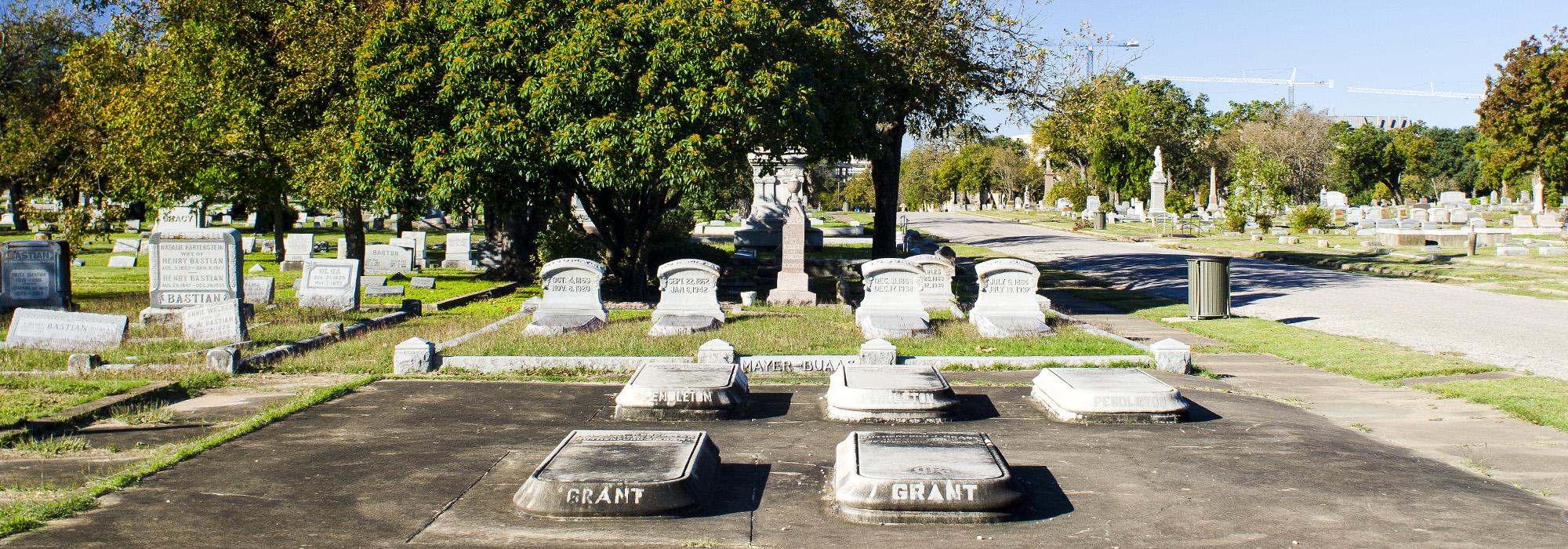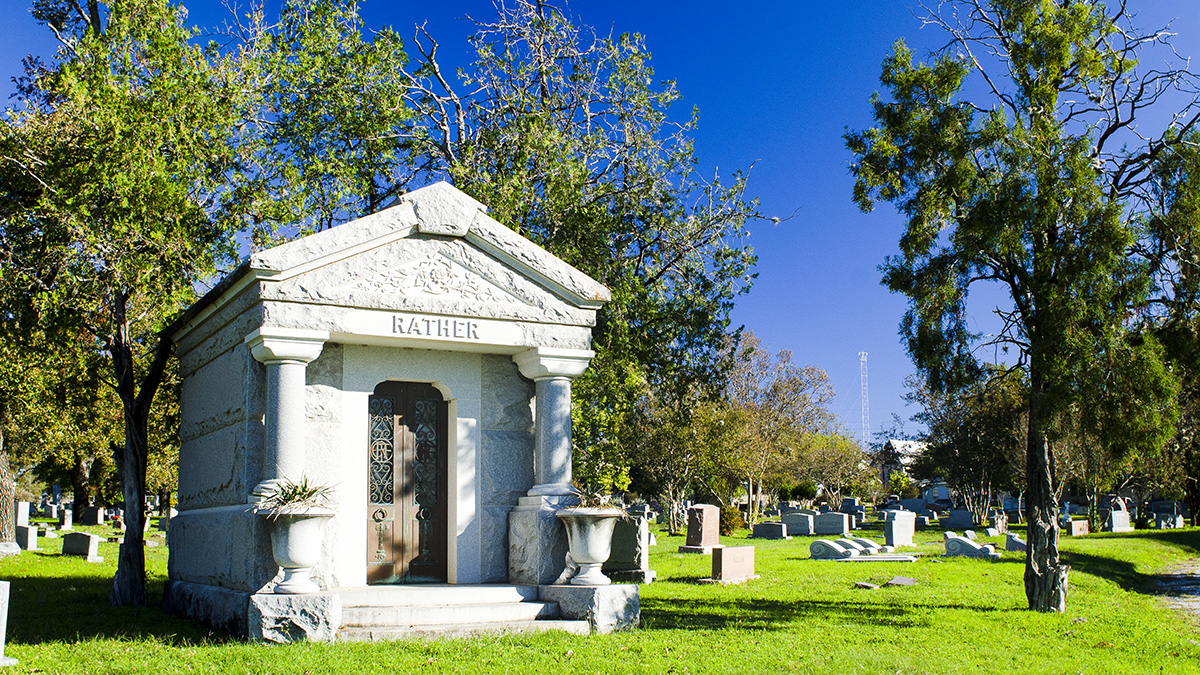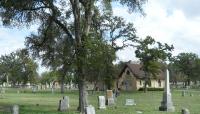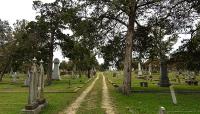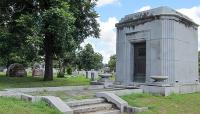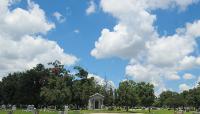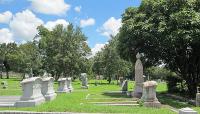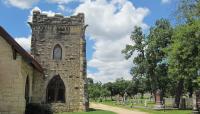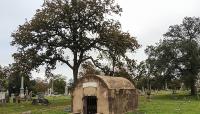Established in 1839 and originally called City Cemetery, this is the oldest of five public cemeteries in Austin. The first reported burial was that of an enslaved person in 1839, and the earliest monument was erected to memorialize two men killed by Native Americans in 1842. The cemetery became the city’s official burial ground in 1856, and, shortly thereafter, the Austin Cemetery Association was established to care for the landscape.
Located west of Comal Street, the older part of the cemetery is subdivided by roads and paths, with the east-west Main Avenue forming the central spine of its gridded layout and framing views of the Texas Capitol to the west. East of Comal, in the so-called Annex, a curving loop road in the form of a figure-eight parses burial areas into lawns of irregular sizes and shapes. Prior to the arrival of the railroad in the 1870s, Oakwood’s monuments were made of local limestone and wood. Later monuments comprise a variety of materials—metal, granite, marble, and other types of stone—and include five family mausolea distributed throughout the cemetery. The Gothic Revival chapel, designed by local architect Charles Page and constructed in 1914, is located on Main Avenue. A natural swale that drained to Waller Creek was channelized in the 1930s; the concrete channel is traversed by pedestrian bridges. Groves of red cedar, live oak, pecan, and crape myrtle are interspersed with post oak and underplanted with occasional shrubs. The 40-acre cemetery’s 23,000 burials—reflective of Austin’s diverse population with two Jewish sections and the burials of colonial pioneers and five governors—is managed by the City and continues to receive burials.



